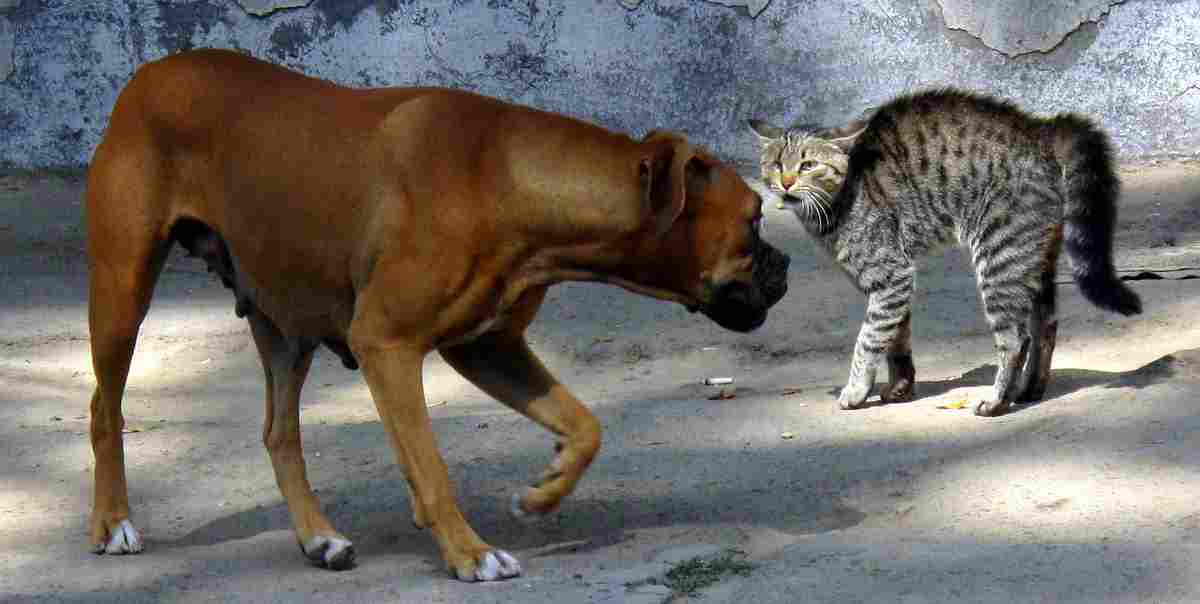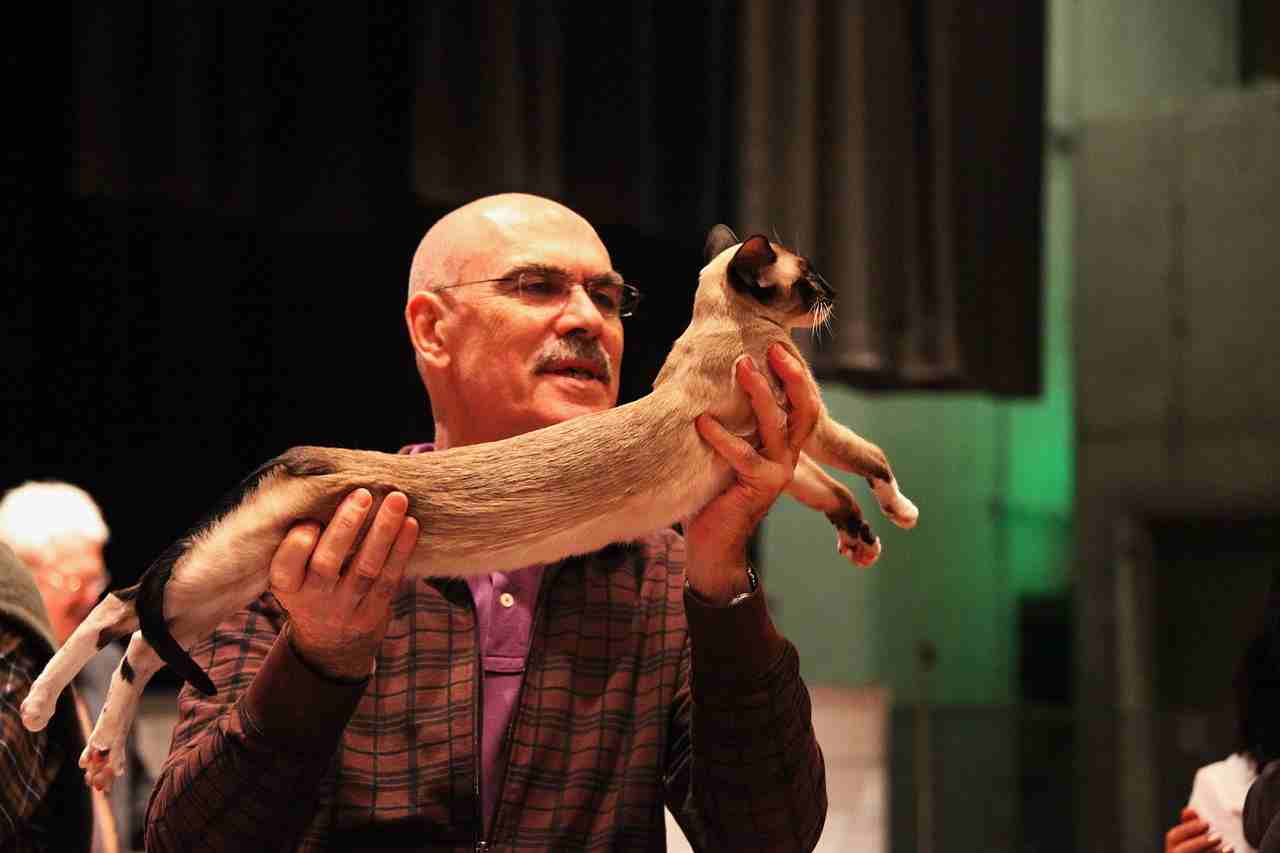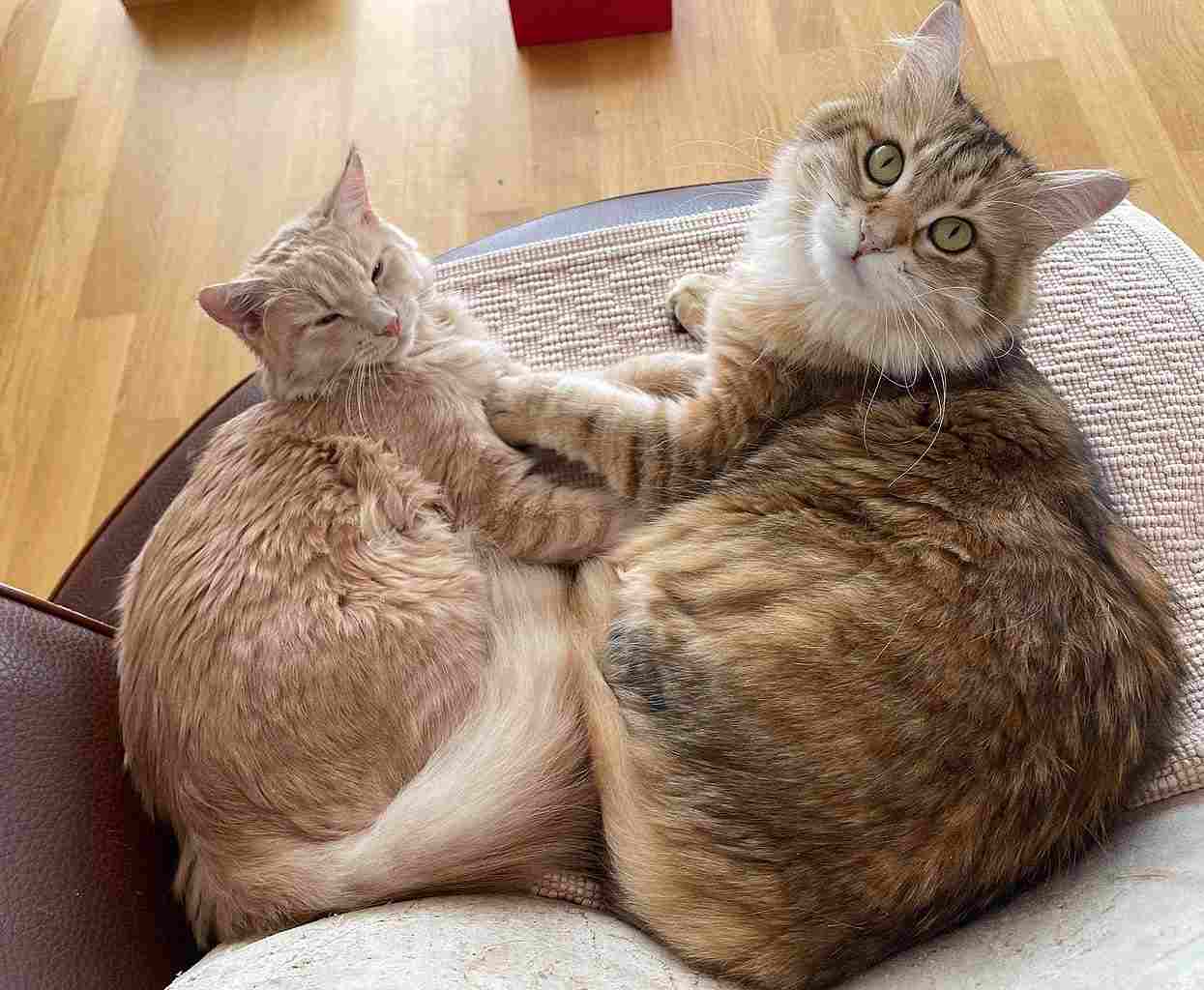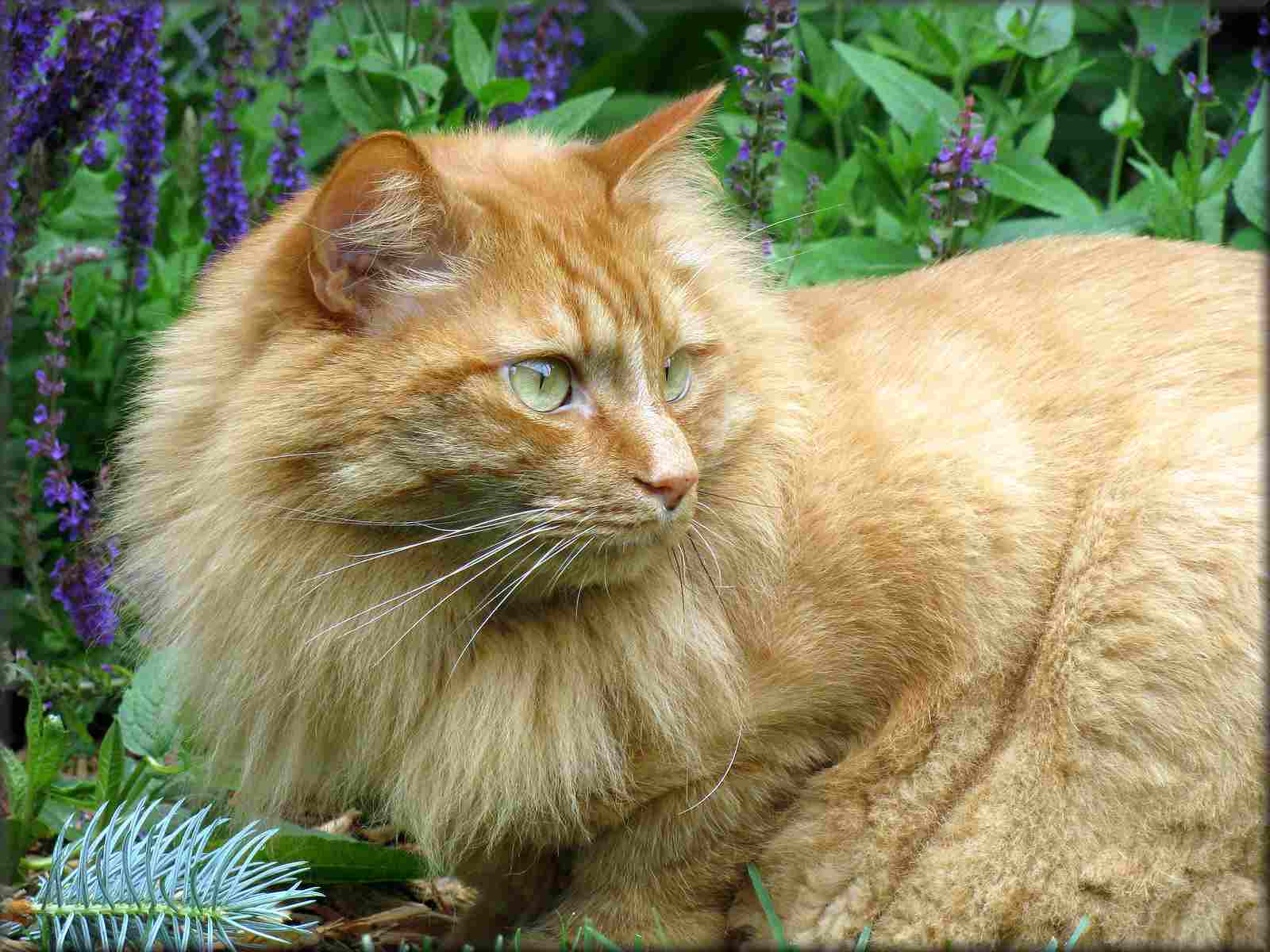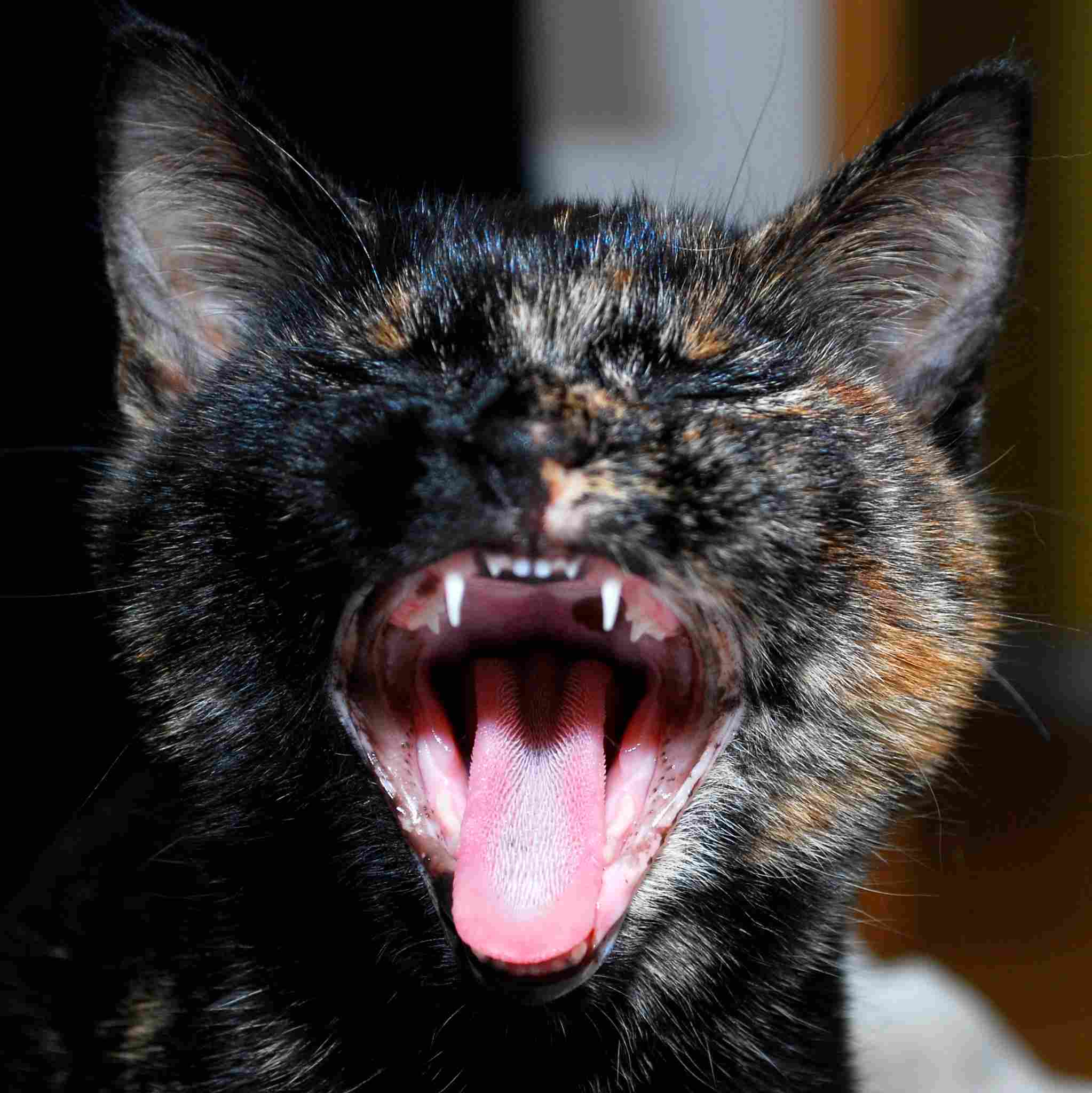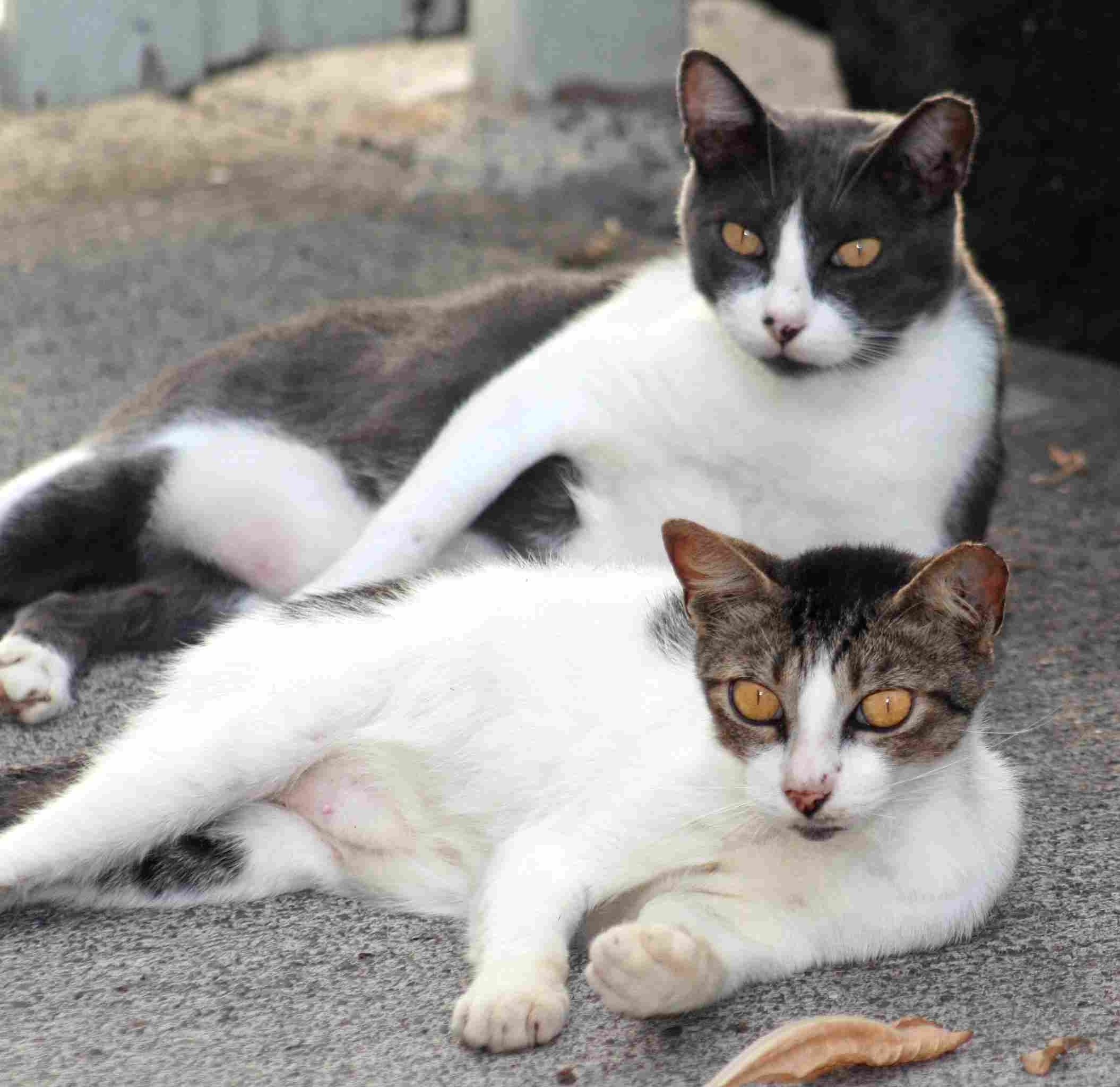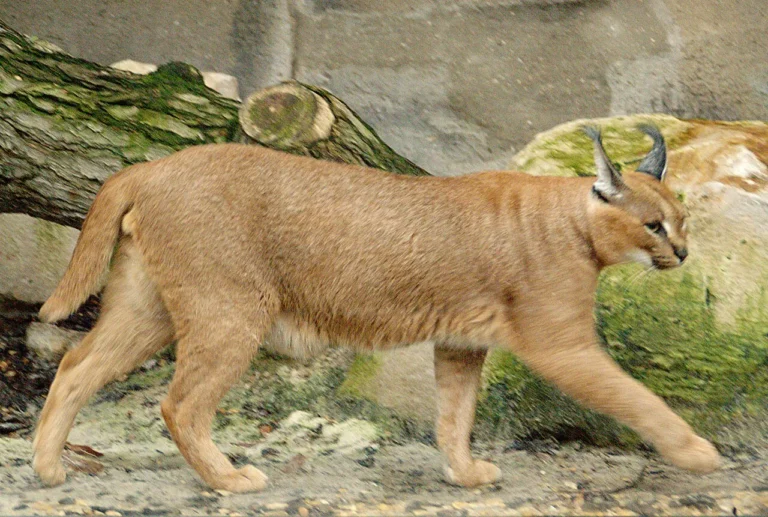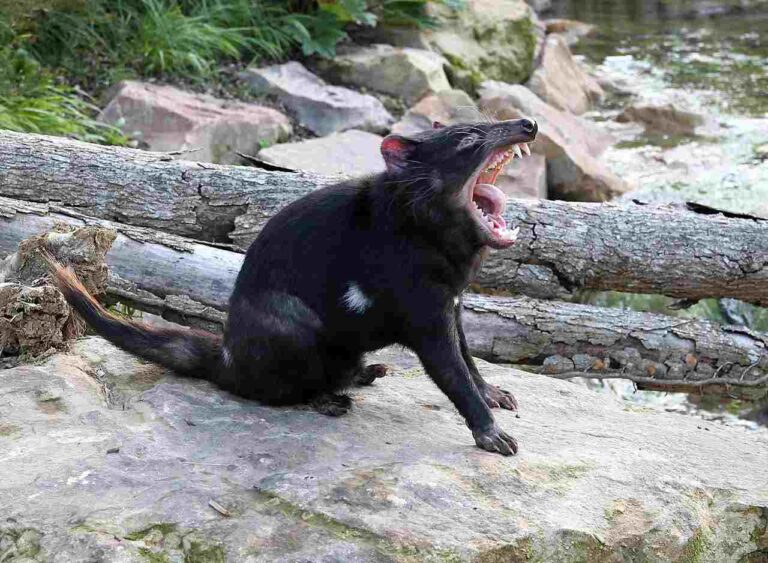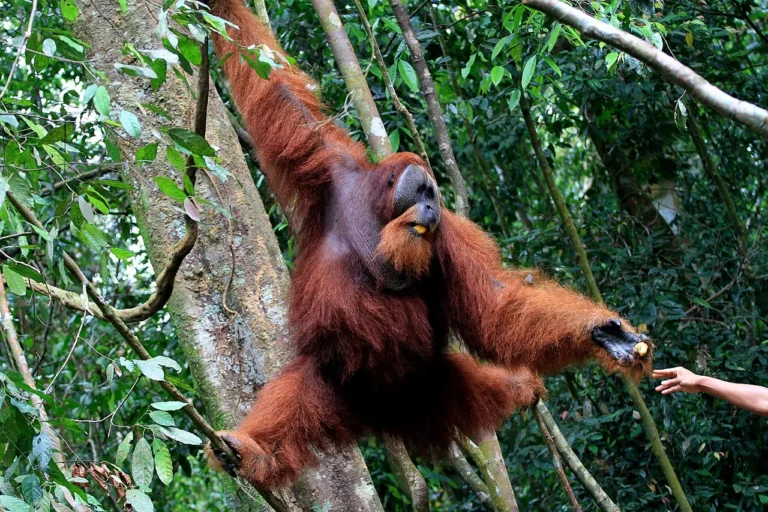Bombay Cat Vs Black Cat Size, Weight, Overall Comparison
In the realm of feline diversity, the distinction between a Bombay cat and a black cat lies in the precision of their coat coloration. While all Bombay cats boast a uniform jet-black hue across their fur and even their paws, a black cat, encompassing various breeds, may exhibit a range of coat patterns and colors. Assessing the potential outcome of a confrontation between a Bombay cat and a black cat necessitates considering factors such as the specific breed of the black cat, along with its size, strength, agility, and level of aggressiveness in comparison to the Bombay cat.
I. Distinctive Coat Coloration:
– The primary difference lies in the coat coloration. Bombay cats are uniformly black across their fur and paws, while black cats, representing various breeds, may display different coat patterns and colors.
II. Uniform Black Hue in Bombay Cats:
– All Bombay cats share the distinguishing feature of a solid, jet-black coloration covering their entire fur and even extending to their paws. These sleek uniformity of coloration makes them unique in appearance.
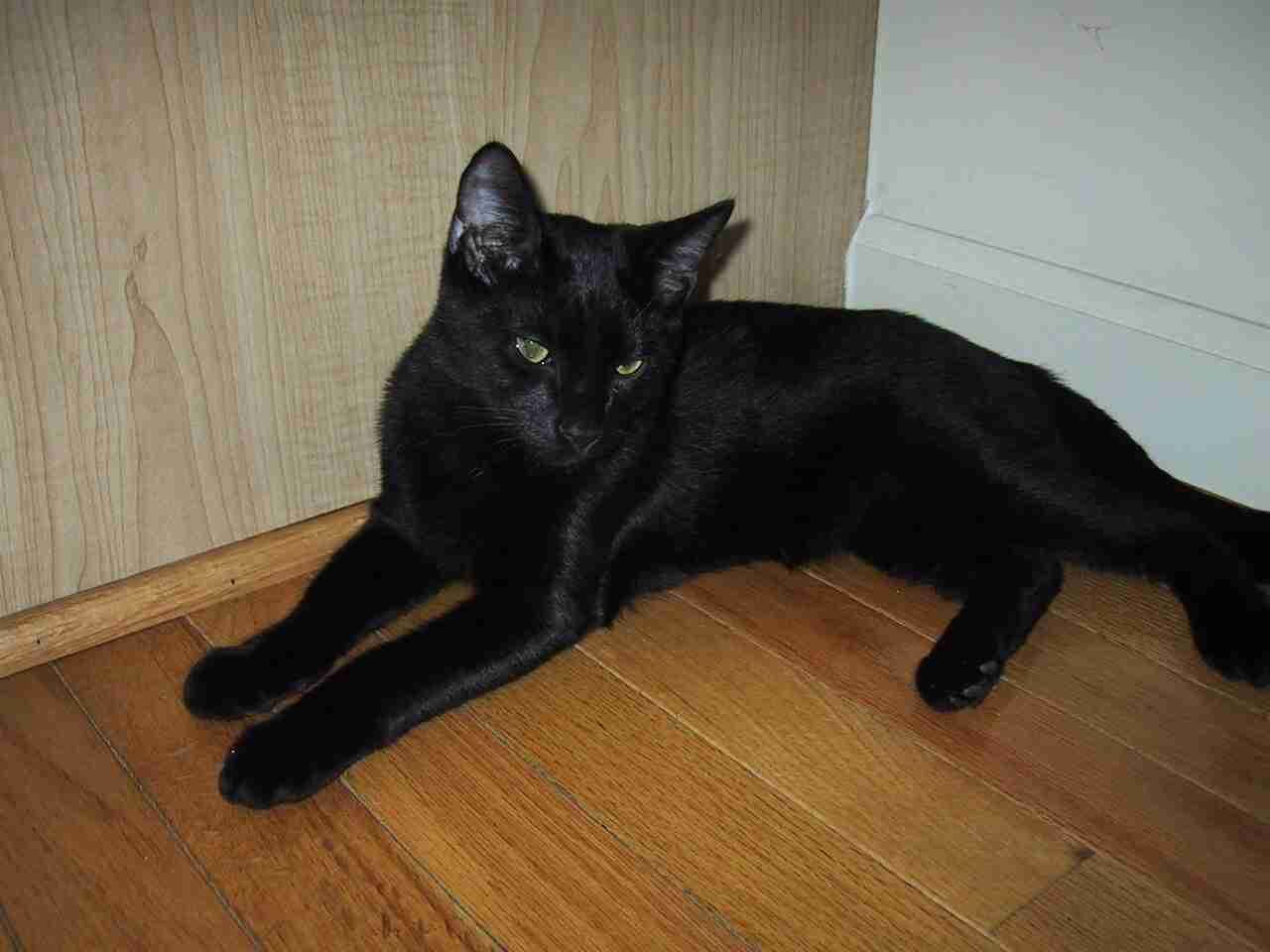
III. Variation in Black Cats:
– Black cats, representing a variety of breeds, may exhibit diverse coat patterns and shades of black. Unlike the Bombay cat, their black coloration may not be uniform across their entire fur and paws.
IV. Outcome of a Confrontation:
– The potential outcome of a fight between a Bombay cat and a black cat hinges on several factors, including the specific breed of the black cat, its size, strength, agility, and level of aggressiveness compared to the Bombay cat.
V. Assessing Size and Strength:
– The size and strength of the black cat relative to the Bombay cat play a crucial role in determining the potential dominance in a physical confrontation.
VI. Agility and Defensive Skills:
– The agility and defensive skills of both cats contribute to their ability to navigate and respond in a confrontation. These factors influence the potential outcome based on their respective capabilities.
VII. Aggressiveness:
– The level of aggressiveness exhibited by each cat is a key determinant in predicting the dynamics of a confrontation. A more aggressive cat may have an advantage over a less assertive counterpart.
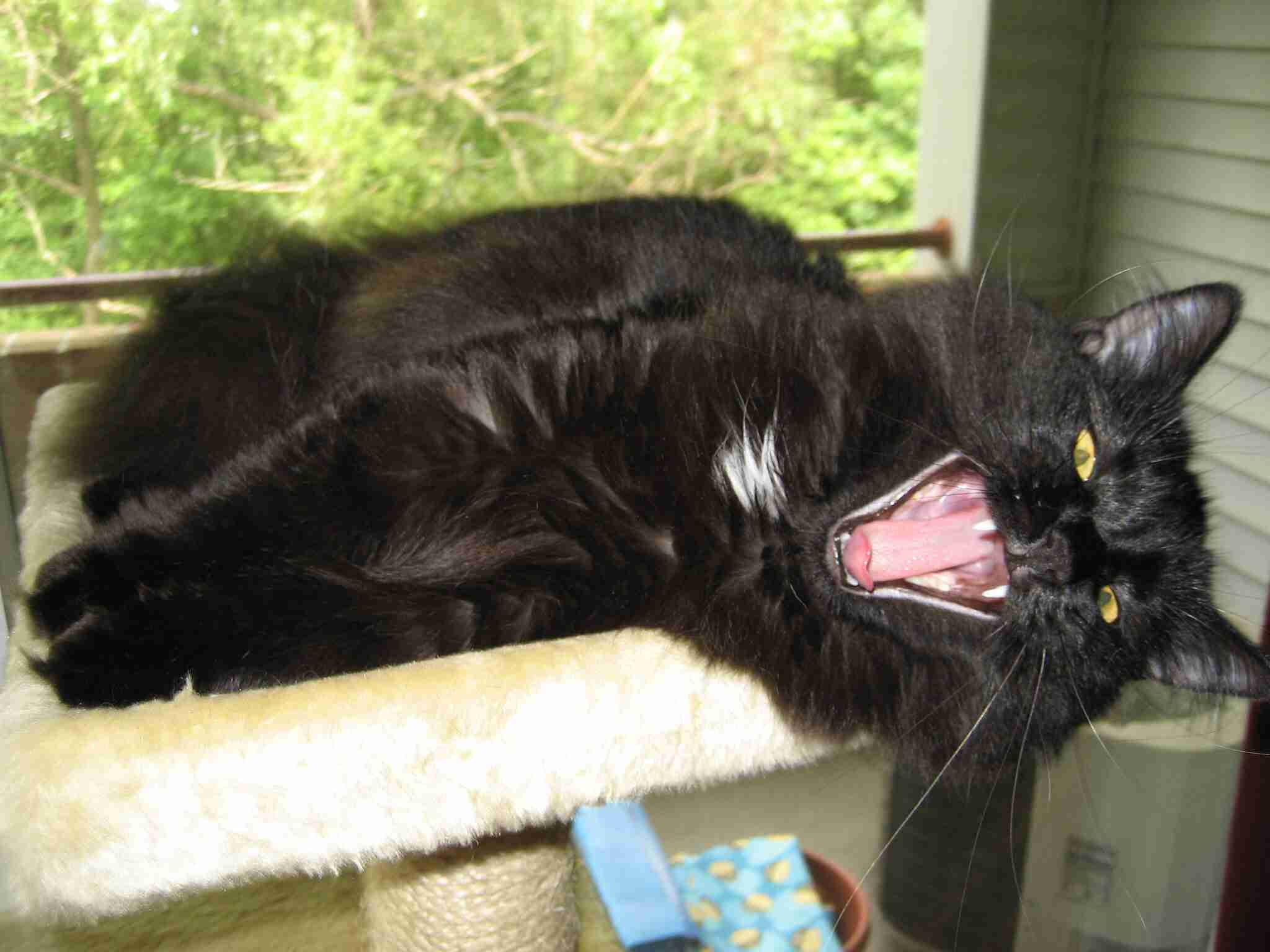
VIII. Breed-Specific Considerations:
– Understanding the specific breed of the black cat provides insights into its inherent characteristics, potentially influencing the overall dynamics in a fight with a Bombay cat.
IX. Coexistence Dynamics:
– While considering potential confrontations, it is essential to appreciate the varied coexistence dynamics among cats. Recognizing their unique traits and behaviors fosters an understanding of the intricacies within feline interactions, emphasizing the importance of a harmonious environment.
*Details of Comparison
| Criteria | Bombay Cat | Black Cat |
| Taxonomy | Order: Carnivora, Family: Felidae, Genus: Felis, Species: F. catus |
Order: Carnivora, Family: Felidae, Genus: Felis, Species: F. catus
|
| Appearance | Uniform black coat, rounded head, medium-sized ears |
Diverse coat lengths, textures, facial features, often solid black
|
| Size | Medium-sized | Medium-sized |
| Weight | 8-15 pounds |
Varies among breeds, generally similar to Bombay
|
| Bite Force (PSI) | Around 300 PSI |
Comparable bite forces
|
| Physical Offensive Advantages | Agile with pouncing abilities |
Varied offensive strategies based on breed
|
| Physical Defensive Advantages | Quick reflexes, flexibility |
Varied defensive mechanisms based on breed
|
| Speed | Up to 30 mph | Up to 30 mph |
| Agility | Highly agile with balance |
Agility varies among breeds
|
| Senses | Sharp sight, hearing; well-developed whiskers |
Sharp sight, hearing
|
| Overall Physical Capacity | Balanced strength, agility, speed |
Diverse physical capacities based on breed
|
| Habitat Preference(s) | Adaptable to various indoor environments |
Adaptable to various indoor environments
|
| Tracks | Small paw prints with retractable claw marks |
Similar small paw prints with retractable claw marks
|
| Lifespan | 12-16 years | 12-16 years |
| Mode of Feeding | Carnivorous diet | Carnivorous diet |
| Intelligence | Known for high intelligence and trainability |
Varies among breeds, some exhibit high problem-solving abilities
|
| Social Behavior | Generally sociable |
Varies among breeds, some may be more independent or reserved
|
| Mode of Reproduction | Sexual reproduction |
Sexual reproduction
|
| Parental Behavior | Exhibits nurturing behavior towards offspring |
Varies among breeds, some exhibit strong maternal instincts
|
| Proximity to Human-Inhabited Areas | Commonly found in human homes |
Commonly found in human homes
|
| Behavior Toward Humans | Affectionate, enjoys human interaction |
Varies among breeds, influenced by individual traits
|
| Danger Posed to Humans | Generally minimal danger |
Generally minimal danger, individual behaviors may differ
|
| Associated Precautions | Regular grooming, routine veterinary care |
Precautions vary among breeds, include grooming and veterinary check-ups
|
| Conservation Status | Not applicable as domestic breeds |
Not applicable as domestic breeds
|
| Conclusion | I. Similarities: Same species, F. catus; Companions with minimal danger to humans |
II. Differences: Bombay has distinct breed characteristics; Black cats vary in traits among different breeds
|
1. Taxonomy:
Bombay Cat:
Order: Carnivora
Family: Felidae
Genus: Felis
Species: F. catus
Black Cat:
Order: Carnivora
Family: Felidae
Genus: Felis
Species: F. catus
Both the Bombay cat and black cat belong to the same order, family, genus, and species, emphasizing their close evolutionary relationship.
2. Appearance:
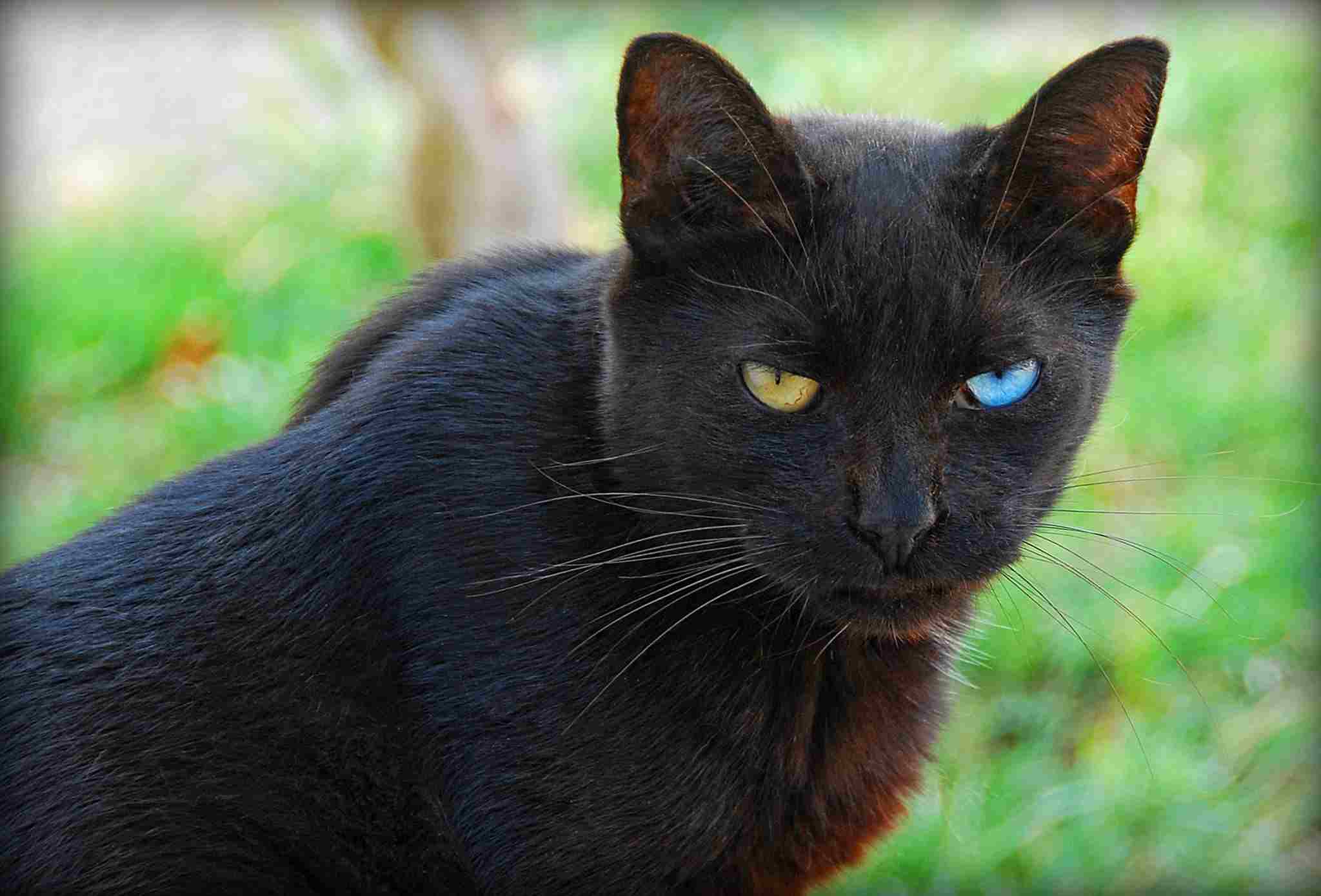
Bombay Cat:
Sleek, black coat with a patent leather-like shine
Rounded head, large expressive eyes, and medium-sized ears
Black Cat:
Variable coat lengths and textures, but often solid black
Diverse facial features, including different eye shapes and ear sizes
Comparison: The Bombay cat is a specific breed with a distinctive appearance, characterized by its uniform black coat and unique facial features. In contrast, the term “black cat” encompasses a broader category, including various breeds with black fur, resulting in a more diverse array of appearances.
Ecological Implications: The sleek appearance of the Bombay cat may offer advantages in stealth during hunting, potentially influencing its ecological role within its habitat. The varied appearances of black cats might provide them with adaptive advantages in different environments.
3. Size:
Bombay Cat:
Medium-sized cat breed
Average length of 12-16 inches (30-40 cm)
Black Cat:
Size varies among different breeds
Generally falls within a similar size range as the Bombay cat
Comparison: Both the Bombay cat and black cat, being domestic breeds, share a comparable size range. Specific size differences may exist based on individual breeds within the broader category of black cats.
Ecological Implications: Size can influence an animal’s position in the food chain, affecting its role and interactions within the ecosystem. However, as domesticated animals, these cats may have less direct ecological impact than their wild counterparts.
4. Weight:
Bombay Cat:
Typically weighs between 8-15 pounds (3.6-6.8 kg)
Black Cat:
Weight varies depending on the specific breed
Generally falls within a similar weight range as the Bombay cat
Comparison: Similar to size, the weight of both Bombay and black cats is influenced by their specific breed characteristics. Individual differences within the broader category of black cats can lead to variations in weight.
Ecological Implications: Body weight influences factors such as energy requirements, hunting capabilities, and territory size. In a domestic setting, these implications may be less pronounced compared to the wild.
5. Bite Force (PSI – Pounds per Square Inch):
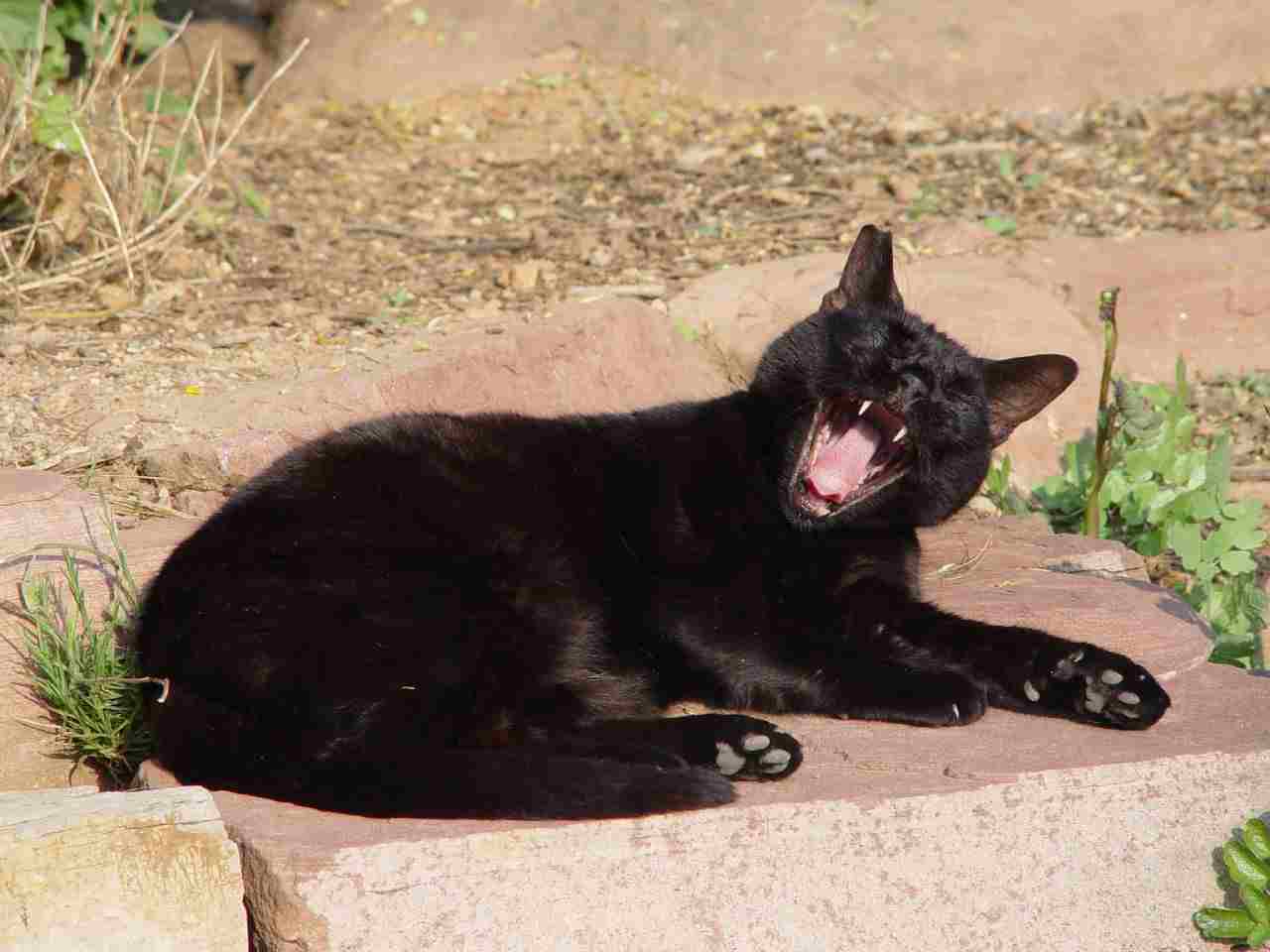
Bombay Cat:
Average bite force around 300 PSI
Black Cat:
Bite force varies among different breeds
Generally falls within a similar range as the Bombay cat
Comparison: Both Bombay and black cats possess similar bite forces, with individual variations based on specific breeds. The bite force reflects adaptations related to hunting and feeding behaviors.
Ecological Implications: Bite force is crucial for hunting and capturing prey. Similar bite forces in these cats suggest comparable ecological roles, even in domesticated settings where their hunting instincts may be expressed through play.
6. Physical Offensive Advantages:
Bombay Cat:
Agile and quick, excelling in pouncing
Sharp retractable claws aid in capturing prey
Black Cat:
Diverse offensive abilities based on specific breed characteristics
Natural hunting instincts, including stalking and ambushing
Comparison: Both cats exhibit offensive prowess, with the Bombay cat’s agility and pouncing abilities complemented by the varied offensive strategies of different black cat breeds.
Ecological Implications: These offensive advantages contribute to their roles as predators, impacting the populations of smaller prey species in their ecosystems.
7. Physical Defensive Advantages:
Bombay Cat:
Quick reflexes and the ability to retreat to elevated spaces
Flexible body allows evasion of potential threats
Black Cat:
Varied defensive mechanisms depending on breed
Sharp claws and teeth for self-defense
Comparison: While the Bombay cat relies on agility and reflexes, black cats may employ a range of defensive tactics based on their specific breed characteristics.
Ecological Implications: Defensive capabilities influence a cat’s ability to survive in its environment, impacting interactions with potential predators and competitors.
8. Speed (Km/hour or Mile/hour):
Bombay Cat:
Capable of reaching speeds up to 30 mph (48 km/h)
Black Cat:
Speed varies among different breeds
Generally falls within a similar speed range as the Bombay cat
Comparison: Both Bombay and black cats share comparable speeds, showcasing their agility and rapid movements.
Ecological Implications: Speed is crucial for hunting and evading predators. Similar speed capabilities suggest analogous ecological roles in terms of pursuing prey and escaping threats.
9. Agility:
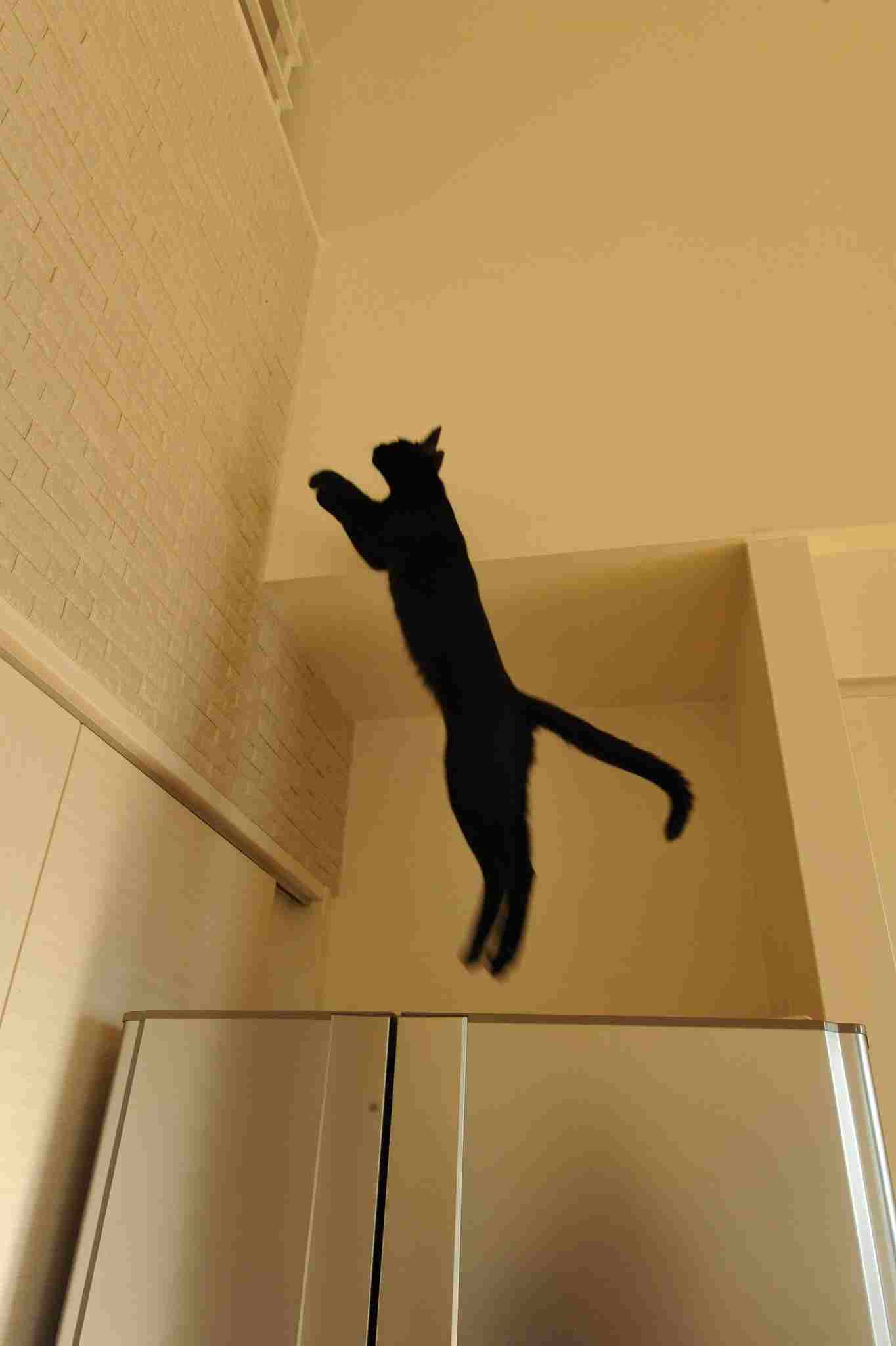
Bombay Cat:
Highly agile, able to navigate tight spaces with ease
Exceptional balance and coordination
Black Cat:
Agility varies among breeds, with some displaying high levels of dexterity
Adaptability to different environments
Comparison: The Bombay cat’s inherent agility is a defining feature, while black cats exhibit varying degrees of agility depending on their specific breed characteristics.
Ecological Implications: Agility is critical for navigating diverse terrains, accessing prey in different environments, and avoiding obstacles or predators. Both cats’ agility contributes to their ecological niche, even in domestic settings.
10. Senses:
Bombay Cat:
Sharp senses of sight and hearing
Well-developed whiskers for tactile perception
Black Cat:
Varied sensory abilities based on specific breed characteristics
Acute hearing and night vision common in black cats
Comparison: While both cats share heightened senses, the specific adaptations may vary among black cat breeds, contributing to diverse sensory profiles.
Ecological Implications: Acute senses are essential for hunting, navigating environments, and detecting potential threats, influencing their ecological roles.
11. Overall Physical Capacity:
Bombay Cat:
Balanced combination of strength, agility, and speed
Well-suited for hunting and play
Black Cat:
Diverse physical capacities based on individual breed traits
Adaptability to various environments
Comparison: The Bombay cat showcases a balanced set of physical abilities, while black cats exhibit a range of capacities depending on their specific breeds.
Ecological Implications: Overall physical capacity determines a cat’s effectiveness in fulfilling its ecological role, whether through hunting, territorial defense, or other behaviors.
12. Habitat Preference(s):
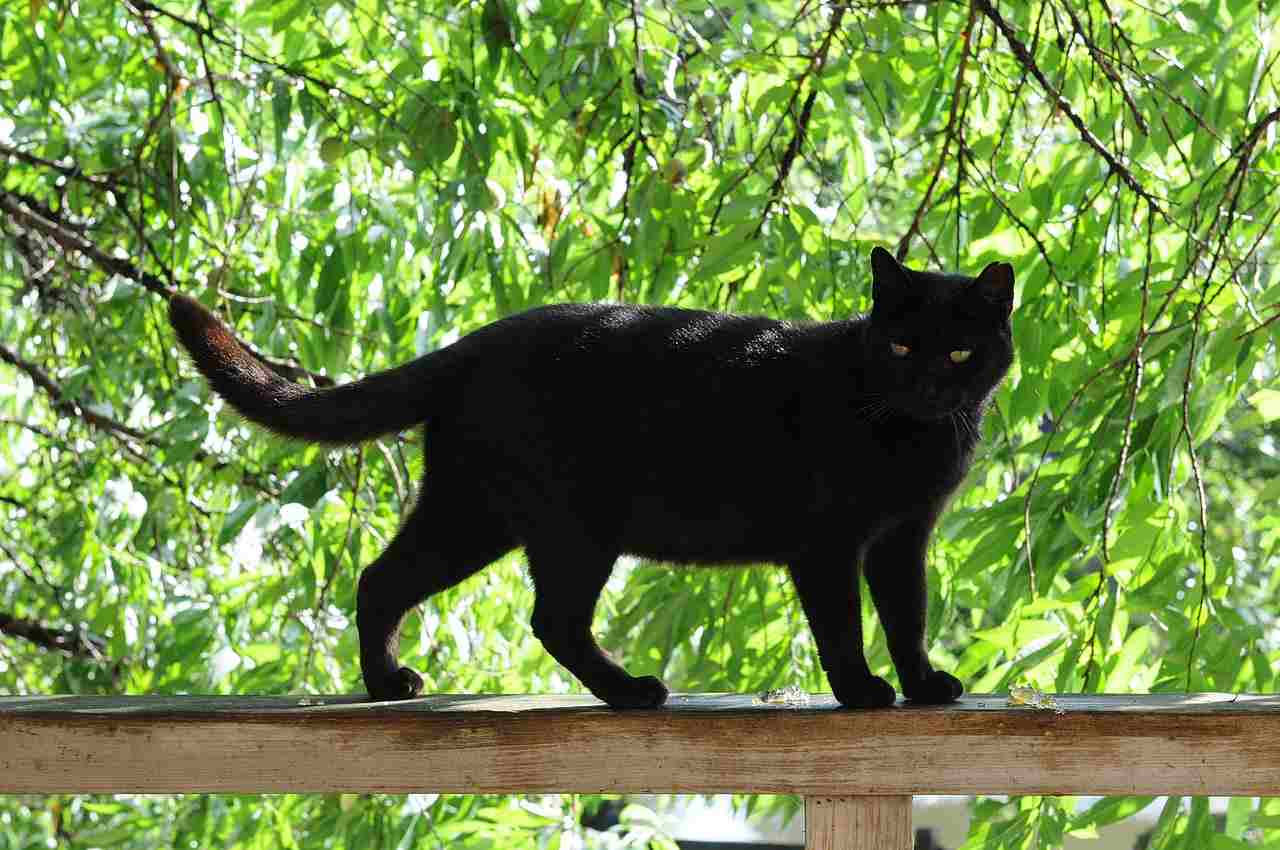
Bombay Cat:
Adaptable to various indoor environments
Enjoys comfortable and warm spaces
Black Cat:
Diverse preferences based on individual breed characteristics
Some may have outdoor or indoor tendencies
Comparison: Both Bombay and black cats demonstrate adaptability to domestic settings, with specific habitat preferences influenced by their individual traits.
Ecological Implications: In a domestic context, habitat preferences impact their well-being, but their adaptability is reduced compared to wild counterparts with more specific habitat requirements.
13. Tracks:
Bombay Cat:
Small, distinctive paw prints with retractable claw marks
Black Cat:
Track characteristics vary among breeds
Generally, paw prints are similar to those of the Bombay cat
Comparison: Paw prints share similarities, with variations based on the specific breed of black cat. Retractable claws leave distinctive marks in both cases.
Ecological Implications: Tracking characteristics are relevant in the wild for identifying territory boundaries and hunting grounds. In domestic settings, these traits may manifest in play behavior and territorial marking.
14. Lifespan:
Bombay Cat:
Typically lives 12-16 years
Black Cat:
Lifespan varies among different breeds
Generally falls within a similar range as the Bombay cat
Comparison: Both Bombay and black cats share a comparable lifespan, influenced by factors such as genetics, environment, and healthcare.
Ecological Implications: In a domestic setting, a longer lifespan may contribute to their roles as companions, providing sustained interactions with humans.
15. Mode of Feeding:
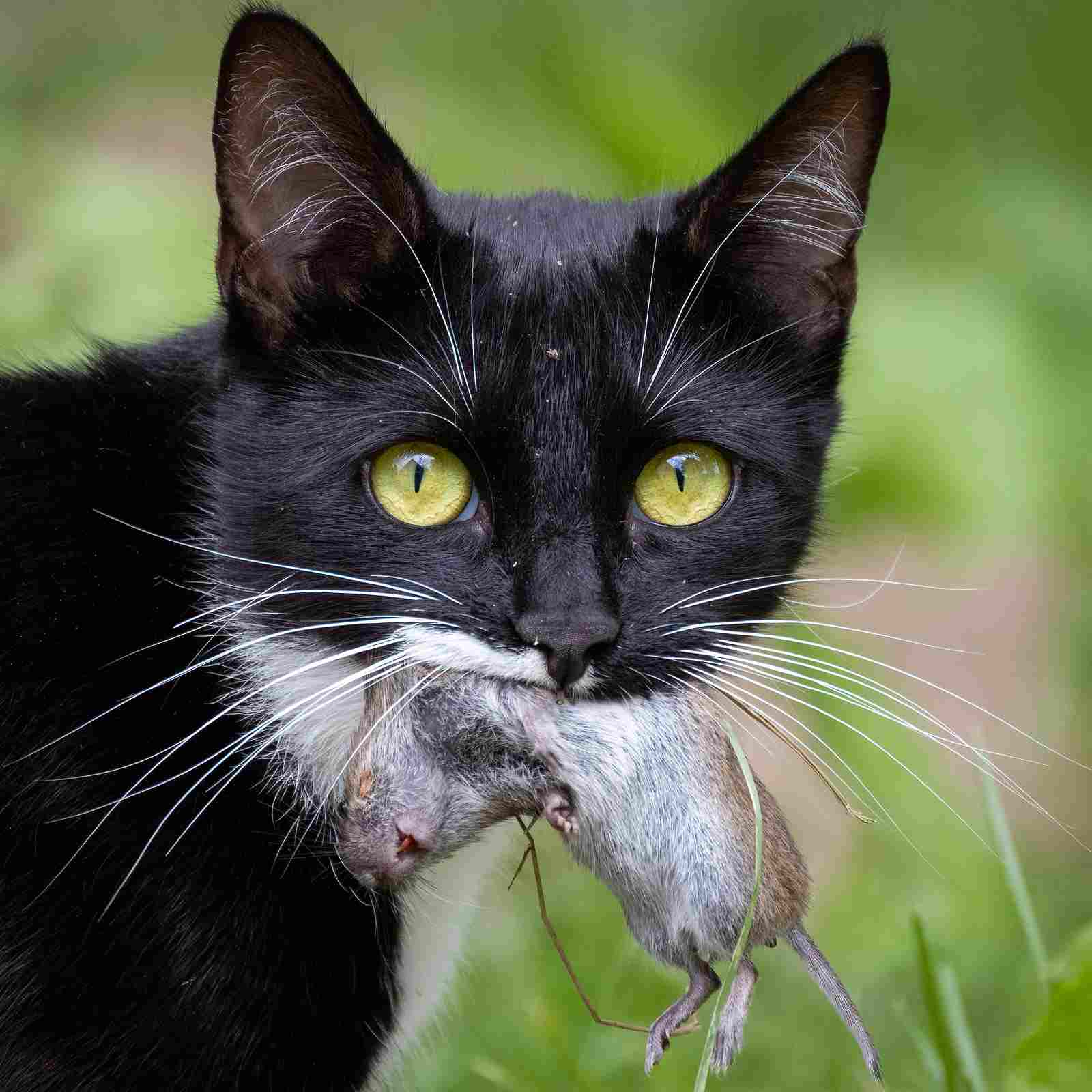
Bombay Cat:
Carnivorous diet, primarily consisting of commercial cat food
Black Cat:
Dietary preferences vary among breeds
Generally follows a carnivorous diet, similar to the Bombay cat
Comparison: Both cats exhibit carnivorous feeding habits, with individual dietary preferences influenced by their specific breeds.
Ecological Implications: In a domestic context, their feeding habits are influenced by the availability of commercial cat food, impacting their nutritional intake and overall health.
16. Intelligence:
Bombay Cat:
Known for high intelligence and trainability
Black Cat:
Intelligence varies among different breeds
Some breeds exhibit high problem-solving abilities
Comparison: While Bombay cats are recognized for their intelligence, intelligence levels among black cats differ based on specific breed characteristics.
Ecological Implications: Intelligence plays a role in adapting to environmental challenges, problem-solving during hunting, and interacting with human caregivers in domestic settings.
17. Social Behavior:
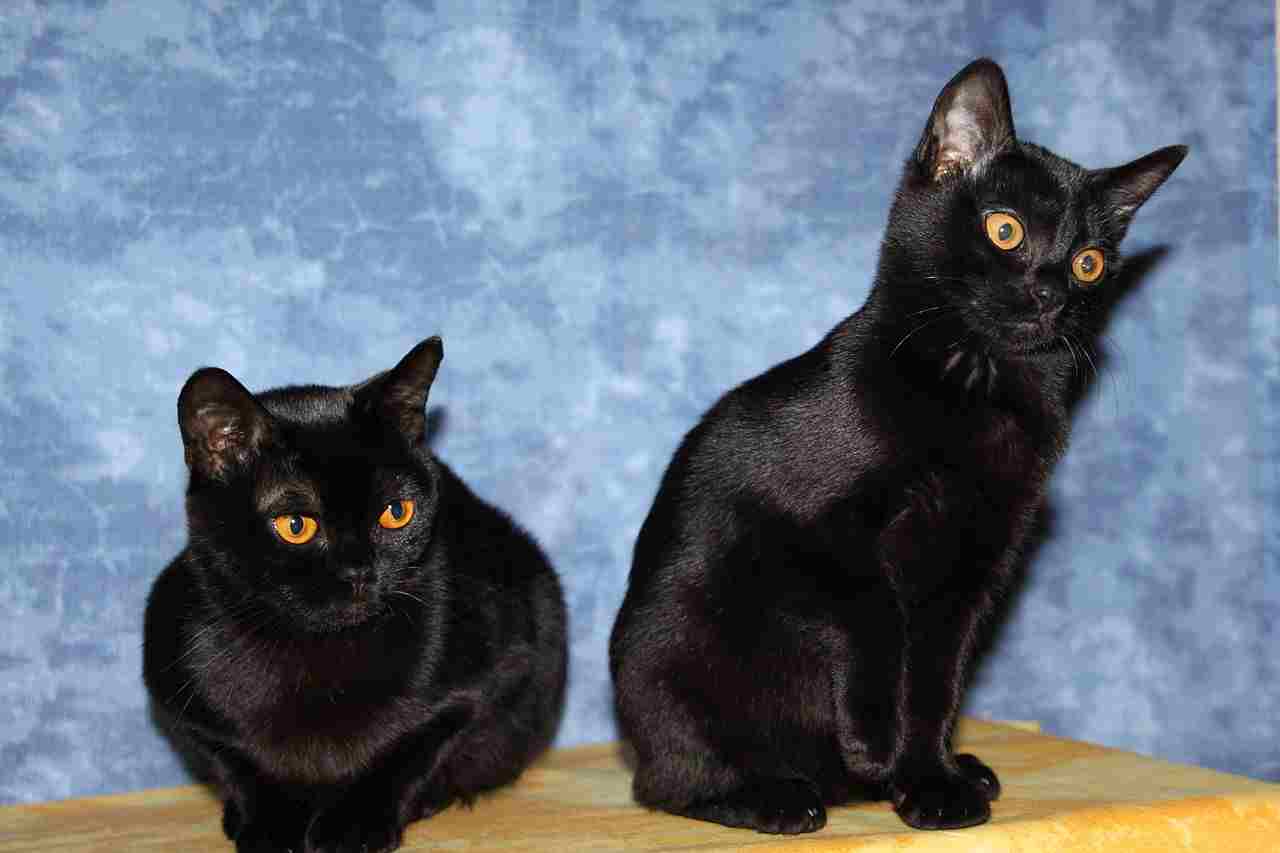
Bombay Cat:
Generally sociable and affectionate
Enjoys human companionship
Black Cat:
Social behavior varies among breeds
Some breeds may be more independent or reserved
Comparison: Both Bombay and black cats exhibit social behaviors, but individual breed characteristics influence their level of sociability.
Ecological Implications: Social behavior impacts their interactions with conspecifics, humans, and other animals in both domestic and wild settings. The level of sociability can influence their roles within their ecological niches.
18. Mode of Reproduction:
Bombay Cat:
Reproduces through sexual reproduction
Gestation period lasts around 63-65 days
Black Cat:
Reproductive modes vary among breeds
Generally reproduces through sexual reproduction
Comparison: Both Bombay and black cats share a common mode of reproduction through sexual means, with specific reproductive traits influenced by individual breeds.
Ecological Implications: Reproductive strategies impact population dynamics, and variations among breeds may influence genetic diversity within domestic cat populations.
19. Parental Behavior:
Bombay Cat:
Exhibits nurturing behavior towards kittens
Engages in grooming and protection
Black Cat:
Parental behavior varies among breeds
Some breeds may display strong maternal instincts
Comparison: Both Bombay and black cats exhibit parental behaviors, such as grooming and protecting their offspring, influenced by their specific breed characteristics.
Ecological Implications: Parental care contributes to the survival and well-being of offspring, impacting population dynamics in both domestic and wild settings.
20. Proximity to Human-Inhabited Areas:
Bombay Cat:
Often found in human homes as a domesticated breed
Enjoys close proximity to human caregivers
Black Cat:
Domestic breeds commonly reside in human-inhabited areas
Varied levels of interaction with humans based on individual breeds
Comparison: Both Bombay and black cats are commonly found in human-inhabited areas, reflecting their roles as domesticated companions.
Ecological Implications: Proximity to human settlements may impact their exposure to potential threats, availability of food resources, and overall well-being.
21. Behavior Toward Humans:
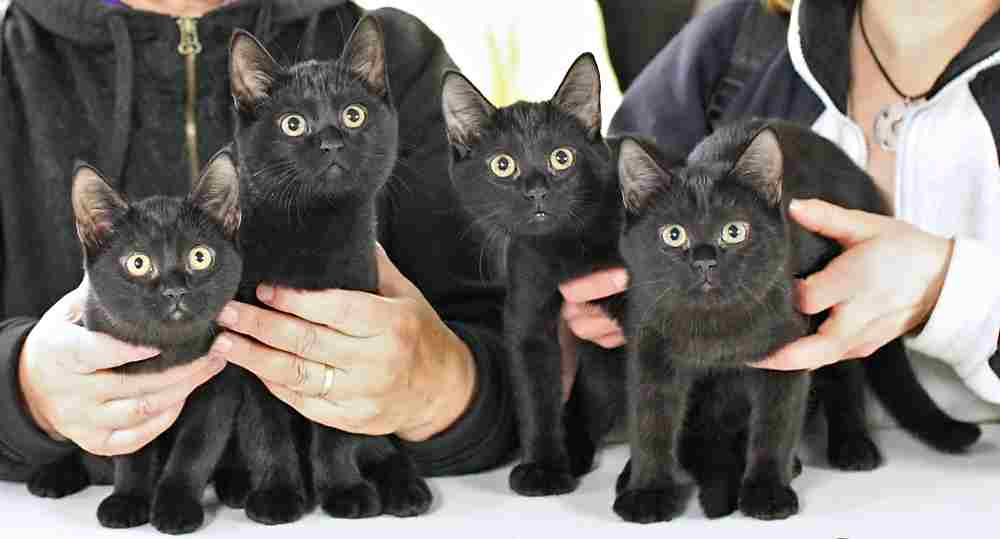
Bombay Cat:
Affectionate, enjoys human interaction
Often seeks attention and companionship
Black Cat:
Behavior varies among breeds
Some breeds may be more independent or reserved with humans
Comparison: While both Bombay and black cats exhibit diverse behaviors toward humans, individual breed characteristics influence their level of affection and interaction.
Ecological Implications: The behavior of domestic cats towards humans can impact their roles as companions and the quality of their interactions within human-inhabited environments.
22. Danger Posed to Humans:
Bombay Cat:
Generally poses minimal danger to humans
May scratch or bite in self-defense or play
Black Cat:
Danger varies among breeds
Generally poses minimal danger, but individual behaviors may differ
Comparison: Both Bombay and black cats typically pose minimal danger to humans, with potential risks associated with defensive behaviors or play.
Ecological Implications: In domestic settings, the danger posed to humans is minimal, emphasizing their roles as relatively safe and affectionate companions.
23. Associated Precautions:
Bombay Cat:
Regular grooming due to its short, shiny coat
Routine veterinary care to monitor health
Black Cat:
Precautions vary among breeds
General care includes grooming and veterinary check-ups
Comparison: Similar precautions, such as grooming and veterinary care, apply to both Bombay and black cats, with specific needs influenced by individual breed characteristics.
Ecological Implications: Routine care and health monitoring contribute to the well-being of domestic cats but have limited ecological implications in a human-dominated environment.
24. Conservation Status:
Bombay Cat:
Not a wild species; conservation status not applicable
Managed through responsible breeding practices
Black Cat:
Conservation status not applicable as it encompasses various breeds
Some breeds may face specific conservation concerns
Comparison: Conservation status is not directly applicable to domestic cat breeds, including Bombay and black cats. Conservation efforts focus on wild cat species.
Ecological Implications: Domestic cats are not subject to conservation efforts in the traditional sense, but responsible breeding practices contribute to the overall welfare of these domesticated animals.
Summary of Comparison
Taxonomy:
Both belong to Order Carnivora, Family Felidae, Genus Felis, and Species F. catus.
Appearance:
Bombay Cat: Uniform black coat, rounded head, and medium-sized ears.
Black Cat: Diverse coat lengths, textures, and facial features, often solid black.
Size:
Both fall within a similar medium size range.
Weight:
Bombay Cat: 8-15 pounds.
Black Cat: Weight varies among breeds, generally similar to Bombay.
Bite Force (PSI):
Comparable bite forces, around 300 PSI on average.
Physical Offensive Advantages:
Bombay Cat: Agile with pouncing abilities.
Black Cat: Varied offensive strategies based on breed.
Physical Defensive Advantages:
Bombay Cat: Quick reflexes and flexibility.
Black Cat: Varied defensive mechanisms based on breed.
Speed:
Both can reach speeds up to 30 mph.
Agility:
Bombay Cat: Highly agile with excellent balance.
Black Cat: Agility varies among breeds.
Senses:
Both have sharp sight and hearing; Bombay has well-developed whiskers.
Overall Physical Capacity:
Bombay Cat: Balanced strength, agility, and speed.
Black Cat: Diverse physical capacities based on breed.
Habitat Preference(s):
Both adaptable to various indoor environments.
Tracks:
Similar small paw prints with retractable claw marks.
Lifespan:
Both have a lifespan of 12-16 years.
Mode of Feeding:
Both exhibit a carnivorous diet.
Intelligence:
Bombay Cat known for high intelligence and trainability.
Social Behavior:
Both generally sociable; individual breeds vary.
Mode of Reproduction:
Both reproduce through sexual means.
Parental Behavior:
Both exhibit nurturing behavior towards offspring.
Proximity to Human-Inhabited Areas:
Both commonly found in human homes.
Behavior Toward Humans:
Both display diverse behaviors influenced by breed.
Danger Posed to Humans:
Generally minimal danger from both; individual behaviors may vary.
Associated Precautions:
Similar grooming and veterinary care requirements.
Conservation Status:
Domestic cats, including Bombay and black, not subject to traditional conservation efforts.
Conclusion:
I. Similarities:
Both Bombay and black cats belong to the same species (F. catus) and share common domestication characteristics.
They exhibit similar ecological roles in human-inhabited environments, serving as companions with minimal danger to humans.
II. Differences:
Bombay cats have distinct breed characteristics, such as a sleek black coat and specific facial features, setting them apart from the broader category of black cats.
Individual breeds within the black cat category exhibit diverse traits, influencing their appearance, behavior, and ecological roles.
